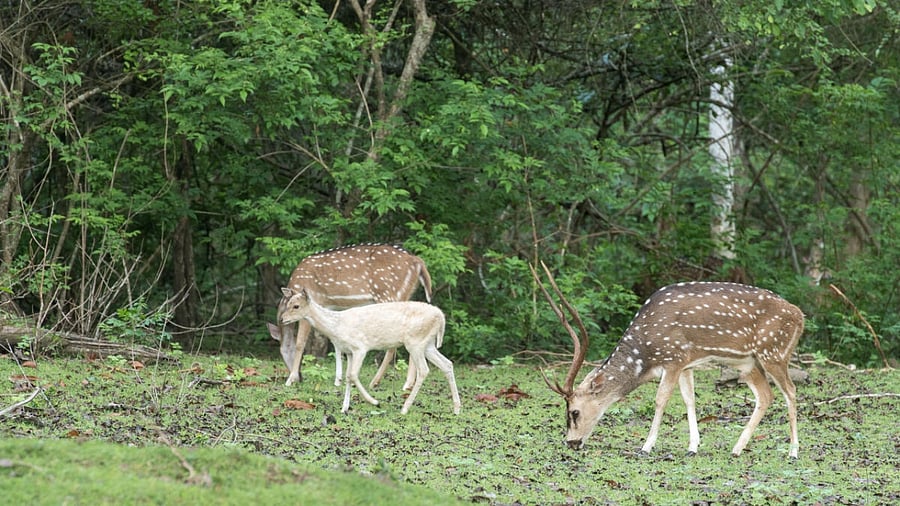
Wildlife enthusiasts on a safari were excited to sight an albino deer (white coloured deer) in a herd near the Taraka backwaters, Antharasanthe range, Nagarahole national park limits in the taluk on Wednesday morning.
The albino deer lacks pigmentation and has a completely white hide and pink eyes, nose and hooves. It is said to be very rarely sighted.
It is common to see herds of deer and rams in Nagarahole sanctuary, which is spread over 642 sq km. On Wednesday, the albino deer was spotted in a herd during the safari.
According to range forest officer Siddaraju, the change in skin colour is either due to lack of or excess melanin. The black panther is another example for this phenomenon, he said.
While this change in colour is advantageous to a few animals in the forest, it is a disadvantage for some. Animals that are totally white and do not blend with the colour of nature will easily become prey to other animals in the wild.
Animals that are totally black in colour by birth, due to excess melanin, adapt well to the wilderness.
While it becomes easy for them to hunt during the night, herbivores that are black in colour can escape from being attacked, according to wildlife photographer Ullas Shanbhog.
